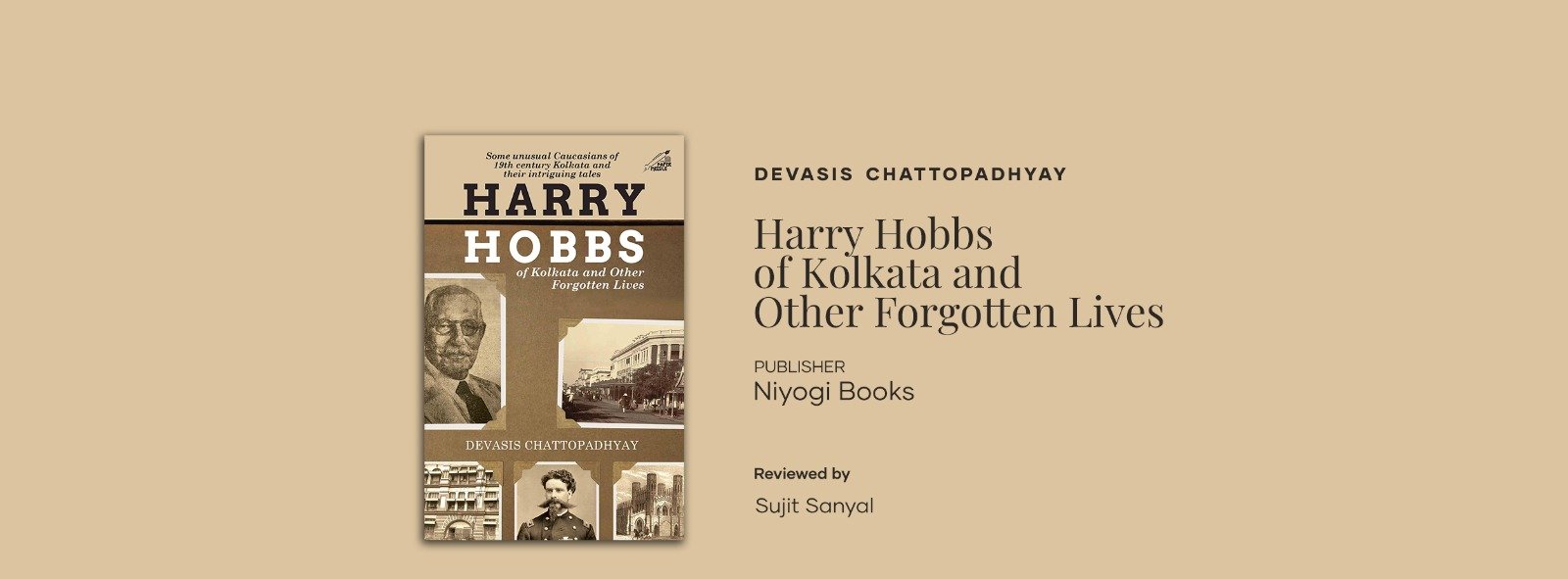

Rum Johnny? Foo Foo Band? A branch of Shakespear the Bard making Kolkata their home (yes, they deleted the last ‘e’)? A lover of Marie Antonitte running a horse-riding school in Kolkata?
These are not a set of quiz questions, but real-time extracts from the social history of Kolkata in the 19th century. There are a number of history books on the growth and development of Kolkata — but many of them are in Bengali — which talk about the people and times the city went through. So, while we know about Hutum Pnechar Naksha, Kolkata Darpan, and even if we are to consider Sunil Gangopadhaya’s Shei Shomoi as a novel based on history, we are still confined to Latu Babus and Gauri Sens.
There can be no ideal opening to the review of Harry Hobbs of Kolkata and Other Forgotten Lives than to once again quote from Kipling’s poem on Calcutta:
“...Thus the midday halt of Charnock—more’s the pity!—
Grew a City.
As the fungus sprouts chaotic from its bed,
So it spread—
Chance-directed, chance-erected, laid and built
On the silt—
Palace, byre, hovel—poverty and pride—
Side by side.”
I say once again since A Tale of Two Cities by Kipling always comes handy when taking on the story of Kolkata.
Devasis Chattopadhayay, a corporate communication professional who moved out from Kolkata, went places, and returned to settle down after retirement, has chased his passion and his dream — that of discovering the social milestones of the city, post the Great Rebellion and thereafter. He had undertaken a huge research on the Great Eastern Hotel, once described by Mark Twain to be the best hotel this part of the Suez, and his findings were published in The Statesman and Ananda Bazar Patrika. The Great Eastern (now Lalit) has been an iconic landmark in the city and naturally, the establishment of the hotel and its related history has been a matter of great curiosity; but Chattopadhaya decided to move out and for the next thirty years as he focussed on his career. However, in 2017, he did publish a novel, Without Prejudice, based on the bar dancers of Mumbai, which was very well received. Once he returned to Kolkata, he dived back into discovering more about the life and lifestyles of Caucasians of 19th Century Kolkata.
And discover he did! He spent hours in The National Library, trying to dig into every scrap of paper, and went through the seven books of Major Harry Hobbs (a professional piano tuner!) and what he documented are volumes on the missing, rather unknown, history of Kolkata. Not only did he flesh out the lives of the characters, he wrote them in such a fluid style that you are forced to turn to the next page.
He transports us to 19th century Kolkata, to the people, the politics, and the dramas. One moment you are at the Bamun Bastee Thana, another time you are watching Dave Carson perform The Bengalee Baboo. Behind these incidents and with many others there is a piece of the city’s history that no one had told us. Social, cultural, political, legal, everything that encompasses the routine lives of a city. All of them add to Kipling’s “...Chance-directed, chance-erected, laid and built, On the silt…”
The book talks about Kolkata being the common location and links for a branch of the Bard of Avon, William Makepiece Thackrey (and family), Virginia Woolf, and even William Darymple! And side by side, the growth of a new class, the Kerani babus! My only suggestion here is that since such illustrious surnames are somewhat interlinked, a fold-out “Family Tree” would have been very handy.
It is a collector’s item and anybody who has had any connection with the city should get a copy, sit back and read. Till the next title is published.
